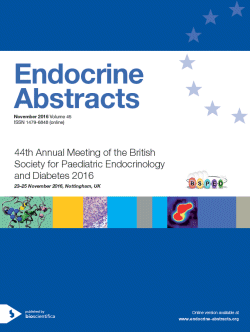
44th Meeting of the British Society for Paediatric Endocrinology and Diabetes
Poster Presentations
Bone
Awareness of Vitamin D supplementation guidelines among the junior doctors at University Hospital of Wales, Cardiff
Sakamudi Jayabharathi , Abdulkader Huda , Vander voort Judith
Craniosynostosis in a case of nutritional rickets
Mohamed Zainaba , Law James , Benson Joanna , Sachdev Pooja , Randell Tabitha , Denvir Louise
Denosumab therapy for hypercalcaemia of malignancy in a young child
Saravanamuthu Abiramy , Katugampola Harshini , Collard Grace , Matei Cristina , Peters Catherine
The use of Bone Health Index standard deviation score (BHI-SDS) in the analysis of cohorts with constitutional delay of growth (CGP), Growth Hormone deficiency (GHD), Turners syndrome (TS) and congenital adrenal hyperplasia (CAH)
Park Julie , Alsaffar Hussain , Frerichs Carley , Parvatti Prashant , Dharmaraj Poonam , Das Urmi , Didi Mohamed , Ramakrishnan Renuka , Senniappan Senthil , Abernethy Laurence , Blair Jo
Chubby cheeks: could it be cherubism?
Farnan Sheila , Kumar Yadlapalli



